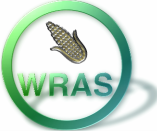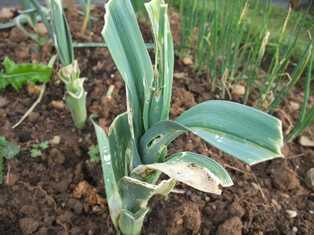|
Jean Price - Plot 4
Did you have problems with your leeks this year? We did, and so did a lot of people that I have spoken to. Quite a few allotment sites in Trafford think that they have been affected by Leek Moth, for the very first time. Leek moth is mainly a problem in southern England but it is spreading north. Here is what the RHS have to say about it: Quick facts Common name Leek moth Plants affected Leek, onion, shallot, garlic Main symptoms White patches on leaves, with young plants rotting and dying. Small caterpillars may be seen in the plant tissues Caused by Caterpillars of a small moth Timing April-October What is leek moth? The adult leek moth is an inconspicuous very small (5-6mm) brown moth. Its larvae (caterpillars) feed on leeks and similar crops. Symptoms Damage from leek moth caterpillars appears as;
Control Non-chemical control The female moths can be prevented from laying eggs by covering susceptible plants with horticultural fleece, or an insect-proof mesh such as Ultra-Fine Enviromesh. Crop rotation should also be practiced to prevent potential build-up of moth populations under the fleece. Look for the white, net-like silk cocoons on the foliage and squash them. Chemical control None of the pesticides currently available to home gardeners for use on leeks and onions will give effective control of leek moth. Biology Leek moth has two generations during the summer with larvae damaging the plants;
When fully fed, the caterpillars are 11 mm long. They come out of the plant and pupate within net-like silk cocoons that are spun on the foliage. Adult moths emerge in autumn and overwinter in sheltered places. There is a much more detailed study here. leek-moth-project-kdunn.pdf
1 Comment
2/11/2018 08:50:08 am
Excellent blog! I found it while surfing around on Google. Content of this page is unique as well as well researched. Thank you for sharing this information.
Reply
Your comment will be posted after it is approved.
Leave a Reply. |
AuthorPlot holders cogitate and ruminate about allotment life. Archives
May 2022
Categories |
Copyright - Walton Road Allotment Society © 2023

